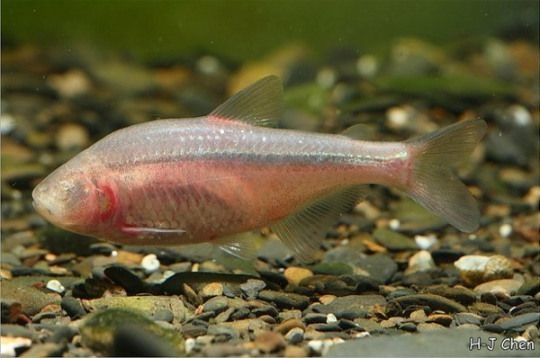2798
Unusual senses from the world of fauna
I present to you a few unusual senses that are present in representatives of the world fauna.

Electronic beak

At first, the description of the platypus - a mammal with a duck's beak, which incubates the eggs, was seen as a joke. Well, what is the ridiculous duck bill? Platypus feeds on small invertebrates that live on the bottom of rivers and lakes. When he dives into his eyes, nostrils and ears are completely closed - no water enters. Beak platypus is literally packed with sensitive sensors can capture even the weakest electric fields arising from the movement of living organisms. Along with the capture of electric fields, beak platypus is also very sensitive to disturbances occurring in the water column. Two of these feelings - and Electroreception mechanoreception allow platypus locate its prey with amazing accuracy.
Echolocation

Bats are traditionally considered blind compared with conventional animals. If the eyes of a bat is much smaller than other predators, and is not nearly as keen, it is only because these mammals have developed the ability to hunt with the help of sound. Echolocation of bats is the ability to use high-frequency sound pulses and the ability to capture the reflected signal to which they estimate the distance and direction to the surrounding objects. At the same time, calculating the speed of insects, they evaluate their prey not only on the time spent on the pulse passes back and forth, but also take into account the Doppler effect. Being nocturnal and hunt mostly on small insects, bats need the ability to not depend on the light. People have little rudimentary form of this feeling (we can understand which side came the sound), but some individuals develop this ability in real echolocation.
Infrared vision

When the police pursuing criminals at night, or rescuers are looking for people under the rubble, they often resort to devices with an infrared image. A significant portion of the thermal radiation of objects displayed at room temperature in the infrared spectrum that may be used to estimate the surrounding facilities on the basis of their temperature. Some species of snakes that prey on warm-blooded animals have special grooves on the head, allows you to capture infrared radiation. Even after blinding the snake can continue to hunt correctly, using their infrared vision. It is noteworthy that at the molecular level of infrared vision snake completely unrelated to the normal vision of the visible spectrum, and should be developed separately.
Ultraviolet

Many people agree that the plants are beautiful. However, while the plants for us - just a decoration, they are vital not only to themselves but also to insects that feed on them. Flowers that are pollinated by insects, "interested" in order to attract these insects and to help them find the right path. For bees flower appearance can mean much more than the human eye is able to discern. So, if you look at a flower in the ultraviolet spectrum, we can see the hidden patterns that are intended to indicate the bees in the right direction. Bees see the world not as we are. Unlike us, they are several visible light spectrum (blue and green), and have a special group of cells to capture the ultraviolet. A professor of botany once said: "Plants use color as the lipstick whores when they want to attract the customer».
Magnetism

Bees also have a second sensory trick hidden in their little furry sleeves. Bee hive to find at the end of a day of continuous operations - a matter of life and death. For the hive, in turn, it is important to remember bee, where is the source of food and could not find the way to it. But, despite the fact that bees have a lot, they can hardly be called an incredibly gifted mental abilities. For navigation, they must use a large amount of different information sources including hidden in its own abdominal cavity. Minute ring of magnetic particles, magnetic iron nuggets hidden in the bee abdomen, allow it to navigate the Earth's magnetic field and determine its location.
Polarization

When the vibrations of light waves in the same direction, it nazyvaetsyapolyarizatsiey. People can not detect the polarization of light without the aid of special equipment, because the light-sensitive cells in our eyes are located randomly (irregularly). Octopuses these cells are arranged. A smoother than there are cells, the brighter the light polarization. How is it that allows you to hunt the octopus? One of the best forms of disguise - be transparent, and a lot of marine life are virtually invisible. However, under the water column there is a polarization of light, and some octopuses use it. When light passes through a transparent body of the animal changes its polarization, octopus notices - and enough prey.
Sensitive shell

Users have the ability to feel the skin because of its surface throughout the sensitive cells are arranged. If you put a protective suit, you will lose most of sensitivity. This can give you a lot of inconvenience, but for hunting spider it would be a real disaster. Paku, like other arthropods have a strong exoskeleton that protects their body. But how in this case, they feel that they touch, how to move around without feeling underfoot surface? The fact that they are exoskeleton minute holes which allows to determine the strain exerted on the force and the pressure shell. This gives the opportunity to feel the spiders the world around them so much as possible.
Taste

In most communities decided to keep his mouth shut. Unfortunately for catfish this is not possible, because his whole body, in fact, is a solid language nestled taste sensitive cells. More than 175,000 of these cells allows you to experience the whole range of passing through them flavors. Ability to capture the subtlest nuances of flavor gives this fish the opportunity to feel the presence of prey at a distance, but also to pinpoint its location, and it all takes place in a very murky water - a typical habitat soms.
Blind Light

Many organisms evolved in a dark environment, have only rudimentary, residual bodies of view, or even completely deprived eye. In any pitch black cave on the ability to see no benefit. Cave fish «Astyanax mexicanus» completely lost eyes, but instead nature gave her the opportunity to capture even the most subtle changes in lighting, which can only be a rocky strata. This ability allows the fish to hide from predators, as a special pineal gland catches the light (as well as responsible for the feeling of day and night). These fish have a translucent body, allowing the light freely passes exactly through the pineal gland, which helps them to find shelter.
Dot matrix vision

In wildlife we can find an amazing variety of shapes and types of eyes. Most of them consist of lenses that focus light to the photosensitive cells (retina), which project the image of the surrounding world. For proper image focus lens may change shape as a person, moving back and forth like an octopus, and use a huge number of other methods. For example, a representative of the species of crustaceans «Copilia quadrata» enjoys an unusual method for displaying the world. This crustacean uses two fixed lenses and moving sensitive light spot. Moving sensitive detector, Copilia builds perceives the image as a series of numbered points, each of which is located in the right place, depending on the intensity of illumination.
Source: synapsebristol.blogspot.com

Electronic beak

At first, the description of the platypus - a mammal with a duck's beak, which incubates the eggs, was seen as a joke. Well, what is the ridiculous duck bill? Platypus feeds on small invertebrates that live on the bottom of rivers and lakes. When he dives into his eyes, nostrils and ears are completely closed - no water enters. Beak platypus is literally packed with sensitive sensors can capture even the weakest electric fields arising from the movement of living organisms. Along with the capture of electric fields, beak platypus is also very sensitive to disturbances occurring in the water column. Two of these feelings - and Electroreception mechanoreception allow platypus locate its prey with amazing accuracy.
Echolocation

Bats are traditionally considered blind compared with conventional animals. If the eyes of a bat is much smaller than other predators, and is not nearly as keen, it is only because these mammals have developed the ability to hunt with the help of sound. Echolocation of bats is the ability to use high-frequency sound pulses and the ability to capture the reflected signal to which they estimate the distance and direction to the surrounding objects. At the same time, calculating the speed of insects, they evaluate their prey not only on the time spent on the pulse passes back and forth, but also take into account the Doppler effect. Being nocturnal and hunt mostly on small insects, bats need the ability to not depend on the light. People have little rudimentary form of this feeling (we can understand which side came the sound), but some individuals develop this ability in real echolocation.
Infrared vision

When the police pursuing criminals at night, or rescuers are looking for people under the rubble, they often resort to devices with an infrared image. A significant portion of the thermal radiation of objects displayed at room temperature in the infrared spectrum that may be used to estimate the surrounding facilities on the basis of their temperature. Some species of snakes that prey on warm-blooded animals have special grooves on the head, allows you to capture infrared radiation. Even after blinding the snake can continue to hunt correctly, using their infrared vision. It is noteworthy that at the molecular level of infrared vision snake completely unrelated to the normal vision of the visible spectrum, and should be developed separately.
Ultraviolet

Many people agree that the plants are beautiful. However, while the plants for us - just a decoration, they are vital not only to themselves but also to insects that feed on them. Flowers that are pollinated by insects, "interested" in order to attract these insects and to help them find the right path. For bees flower appearance can mean much more than the human eye is able to discern. So, if you look at a flower in the ultraviolet spectrum, we can see the hidden patterns that are intended to indicate the bees in the right direction. Bees see the world not as we are. Unlike us, they are several visible light spectrum (blue and green), and have a special group of cells to capture the ultraviolet. A professor of botany once said: "Plants use color as the lipstick whores when they want to attract the customer».
Magnetism

Bees also have a second sensory trick hidden in their little furry sleeves. Bee hive to find at the end of a day of continuous operations - a matter of life and death. For the hive, in turn, it is important to remember bee, where is the source of food and could not find the way to it. But, despite the fact that bees have a lot, they can hardly be called an incredibly gifted mental abilities. For navigation, they must use a large amount of different information sources including hidden in its own abdominal cavity. Minute ring of magnetic particles, magnetic iron nuggets hidden in the bee abdomen, allow it to navigate the Earth's magnetic field and determine its location.
Polarization

When the vibrations of light waves in the same direction, it nazyvaetsyapolyarizatsiey. People can not detect the polarization of light without the aid of special equipment, because the light-sensitive cells in our eyes are located randomly (irregularly). Octopuses these cells are arranged. A smoother than there are cells, the brighter the light polarization. How is it that allows you to hunt the octopus? One of the best forms of disguise - be transparent, and a lot of marine life are virtually invisible. However, under the water column there is a polarization of light, and some octopuses use it. When light passes through a transparent body of the animal changes its polarization, octopus notices - and enough prey.
Sensitive shell

Users have the ability to feel the skin because of its surface throughout the sensitive cells are arranged. If you put a protective suit, you will lose most of sensitivity. This can give you a lot of inconvenience, but for hunting spider it would be a real disaster. Paku, like other arthropods have a strong exoskeleton that protects their body. But how in this case, they feel that they touch, how to move around without feeling underfoot surface? The fact that they are exoskeleton minute holes which allows to determine the strain exerted on the force and the pressure shell. This gives the opportunity to feel the spiders the world around them so much as possible.
Taste

In most communities decided to keep his mouth shut. Unfortunately for catfish this is not possible, because his whole body, in fact, is a solid language nestled taste sensitive cells. More than 175,000 of these cells allows you to experience the whole range of passing through them flavors. Ability to capture the subtlest nuances of flavor gives this fish the opportunity to feel the presence of prey at a distance, but also to pinpoint its location, and it all takes place in a very murky water - a typical habitat soms.
Blind Light

Many organisms evolved in a dark environment, have only rudimentary, residual bodies of view, or even completely deprived eye. In any pitch black cave on the ability to see no benefit. Cave fish «Astyanax mexicanus» completely lost eyes, but instead nature gave her the opportunity to capture even the most subtle changes in lighting, which can only be a rocky strata. This ability allows the fish to hide from predators, as a special pineal gland catches the light (as well as responsible for the feeling of day and night). These fish have a translucent body, allowing the light freely passes exactly through the pineal gland, which helps them to find shelter.
Dot matrix vision

In wildlife we can find an amazing variety of shapes and types of eyes. Most of them consist of lenses that focus light to the photosensitive cells (retina), which project the image of the surrounding world. For proper image focus lens may change shape as a person, moving back and forth like an octopus, and use a huge number of other methods. For example, a representative of the species of crustaceans «Copilia quadrata» enjoys an unusual method for displaying the world. This crustacean uses two fixed lenses and moving sensitive light spot. Moving sensitive detector, Copilia builds perceives the image as a series of numbered points, each of which is located in the right place, depending on the intensity of illumination.
Source: synapsebristol.blogspot.com























